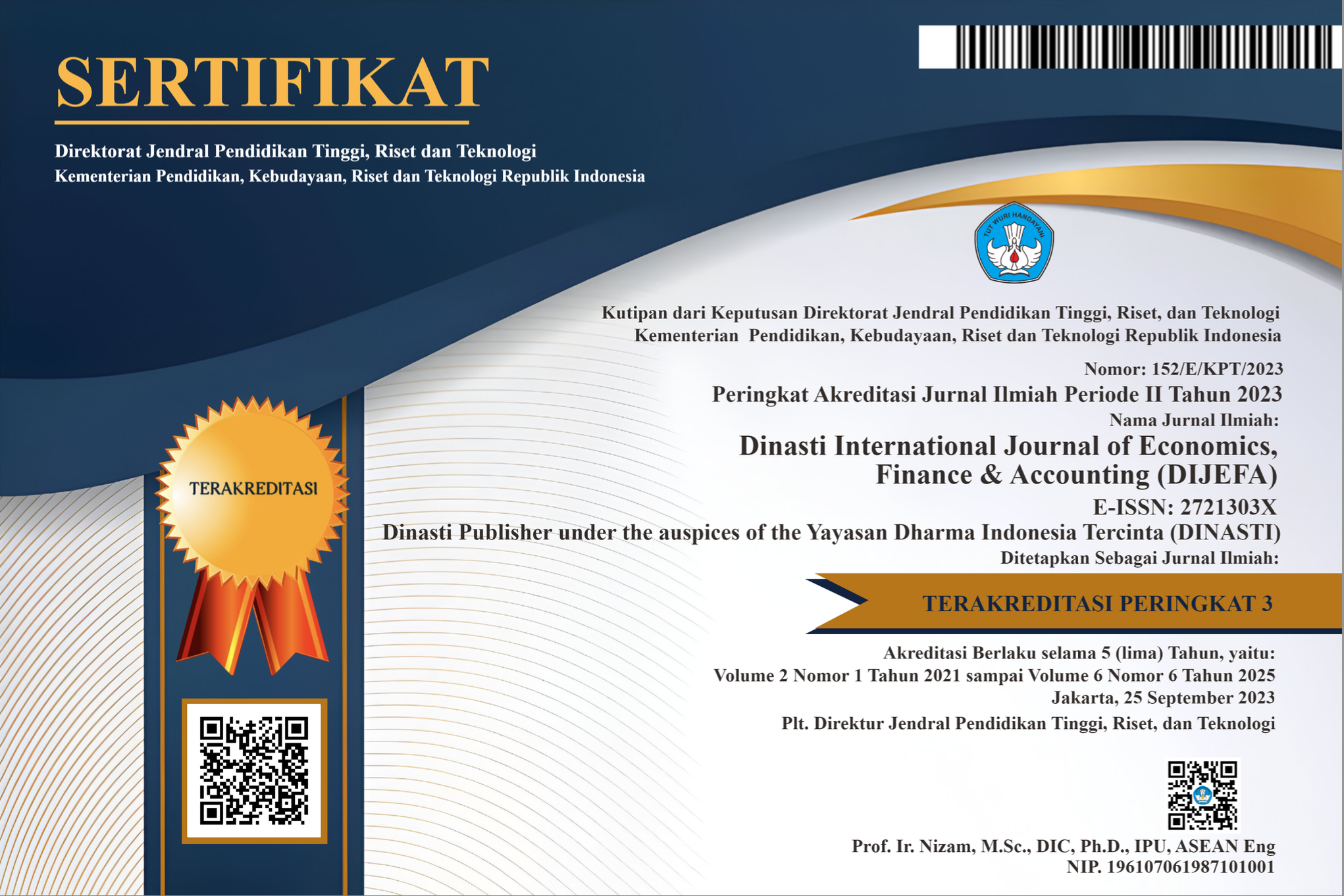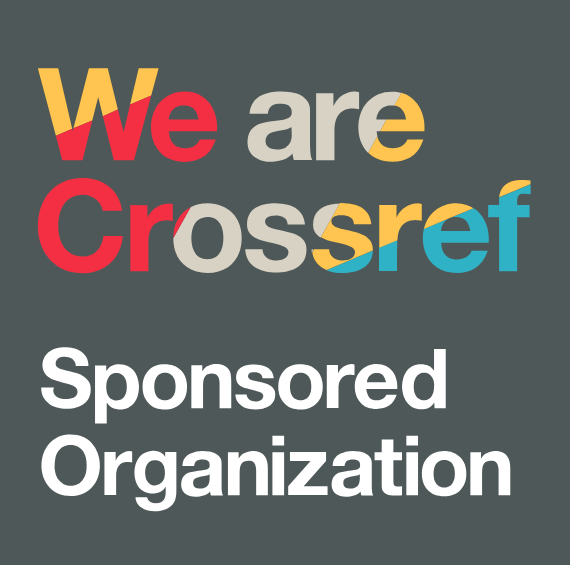DYNAMIC SUPPLY RESPONSE : IMPLICATIONS FOR INDONESIA SOYBEAN CROP
DOI:
https://doi.org/10.38035/dijefa.v1i4.530Keywords:
Dynamic Supply response, Production response, and Soybean cropAbstract
The purpose of the study is to explore the supply response model of the soybean crop in terms of alternative specifications also implications economics. To apply model, considerations through the availability of production lags concept also the existence of expected price and gross revenue because of producer’s response explanatory preference on movement economic situation. The results showed that the existing lags were due mostly to the problems also quick adjustment expenditure rather than correcting expected time. The quantitative result was the same as gross margins and prices alternative specification as the availability of economic decisions. Meanwhile, elasticities price found through the model response specification tended around a fourth of the model applying price specification. The model response specification produced more explanation in terms of production also elasticity of input expenditure.
References
2. Bappeda. Raw Material and Research Development Annual Survey Report. Raw Material Research and Development Council of Indonesia. Jakarta. 2018.
3. Bapna, S.L., Binswanger, H.P. and Quizon, J.B. Systems of Output Supply and Factor Demand for Semiarid Tropical India. Economic Growth Centre, Yale University USA. Pp. 179 – 202, 1991.
4. Behrman J. R. Supply Response in Underdeveloped Agriculture. Amsterdam. North Holland. 1989.
5. BPS, National Population Commission. National Population Cencius Figures and Analysis. National Population Commission Indonesia, Jakarta. 2018.
6. Carpentier, A.: Gohin, A.: Schokai, P. and Thomas. A. Economic Modelling of Agricultural Production: Past Advances and New Challenges. Review of Agricultural and Environmental Studies. 2015 96(1): 131-165.
7. Choi, J.S. and Helmerger P.G. How Sensitive are Crop Yield to Price Changes and Farm Programs ? Journal Agriculture and Applied Economics. 1993 25:237-244
8. Cocharne, W.W. Conceptualizing the Supply Relation in Agriculture. Journal of Economics, 1995 37(5): 1161-75.
9. Colin, T and Townsend R. Dynamic Supply Response Estimation. Annual Conference of AARES. Melbourne Australia. 2011.
10. Dickey DH, and Fuller WH. Likelihood Ratio Statistics for Autoregressive Time Series with Unit Root. Econometrics 1981 49(4): 1057-1072.
11. Edison, The Responsiveness of Jambi Rice Acreage to Price and Production Costs. Proceeding International Seminar CRISU-CUPT in Unsri, Palembang. 2011.
12. Edison, The Responsiveness of Rice Area to Price and Production Cost in Jambi. International Journal of Agricultural System. 2014 2 (2): 133-139..
13. Edison and R. Siata, The Analysis of Soybean Production Supply Response in Tebo District, Jambi. Proceeding National Seminar BKS-PTN in Babel University. Bangka. Pp. 46 – 53. 2017.
14. Edison, The Effect of Price on Meta Profit Function Model: A Case of Western Indonesia Soybean, International Journal of Management Studies, 2020 7(1): 20-25.
15. Edison and Wahyuni,I. Acreage Response under Price Policy Program on Corn Production, International Journal of Scientific & Technology Research , 2020 9,3, 345 – 349
16. Engle RF, and Granger CWJ. Co-integration and Error Correction Representation, Estimating and Testing. Econometrics 2010. 55:251-276.
17. Food and Agricultural Organization. Production Year Book. FAO, Rome, Italy. 2015.
18. Fuller WA. Introduction to Statistical Time Series. Willey, New York. (USA). 1995.
19. Goodwin, B.K.; Ramsey, A.F.: and Chvosta, J. Applied Econometrics with SAS: Modelling Demand, Supply and Risk. SAS Institute Inc. Cary, NC. USA. Pp. 1 – 74, 2018.
20. Greene W. Econometric Analysis Prentice Hall New Jessey, (USA). 2018.
21. D.N. Gujarati, and D.C. Porter, Basic Econometrics. International Edition (5th edition) McGraw-Hill New York. Pp. 1 – 900, 2009.
22. Guyomard, H.; Baudry, M. and Carpenter, A. Estimating Crop Supply Response in the Presence of Farm Programmes: Application to the CAP. European Review of Agricultural Economics 2003 23:401-420.
23. Johnson S. Statistical Analysis of Co-integration Vectors. Journal of Economic Dynamics and Control 1988 12:231-234.
24. Keeney, R. and T.W. Hertel. Yield response to prices: implications for policy modeling. Working Paper Dept. of Agricultural Economics Purdue University. Pp. 1-36. 2008.
25. Mose, L.B.K and Kuvyenhoven, A. Aggregate Supply Response to Price Incentives: The Case of Smallholder Maize Production in Kenya', African Crop Science Conference Proceedings, 2007 8(1):1271-1275.
26. Nainggolan, S., Murdy, S. and Malik, A. Kajian Pendugaan Fungsi Produksi Usahatani Padi Sawah di Kabupaten Muaro Jambi Provinsi Jambi. Fakultas Pertanian Universitas Jambi, Jurnal Penelitian Pertanian, 2018 1(1), 71-86.
27. Oktaviani R, Asmarantaka RW. The Rise in International Food Prices: The Impact on and Policy Implications for Indonesian Food Security. Department of Economics and Agribusiness, Faculty of Economics and Management, Bogor Agricultural University, Indonesia. Contributed Paper at the Thirteen Annual Conference on Global Economic Analysis United Nations Conference Centre, Bangkok, Thailand. 2017.
28. Pearson, S. Falcon, W. Heytens, P. Monke, E and Naylor, R. Rice Policy in Indonesia, Cornell University Press. Ithaca New York. 1991.
29. Savadatti, P.M.; Supply Response of Pigeonpea in India, Cointegration and Vector Error Correction Analysis, International Journal of Research in Economics and Social Sciences (IJRESS), 2018 8(2): 381-392
30. Tollens E. Food security: Incidence and causes of insecurity among vulnerable groups and coping strategies. In: Food security in ACP countries, Proceedings of a CTA seminar, Leuven, Belgium. 1998.
31. Tripath A. Estimation of Agricultural Supply Response by Co-integration Approach. Indian Crauh Institute of Development Research. India. 2017.
32. United State’s Development Agency. USDA. Indonesian Soybean Output Growing. Trade Intelligence Alibaba.com, America. 2018.
33. Yu, B. Liu, F, and You, L. (Dynamic Agricultural Supply Response Under Economic Transformation. IFPRI Discussion Paper, Washington, D.C. U.S.A. 2010.
Downloads
Published
How to Cite
Issue
Section
License
Authors who publish their manuscripts in this journal agree to the following conditions:
- The copyright on each article belongs to the author(s).
- The author acknowledges that the Dinasti International Journal of Economics, Finance & Accounting (DIJEFA) has the right to be the first to publish with a Creative Commons Attribution 4.0 International license (Attribution 4.0 International (CC BY 4.0).
- Authors can submit articles separately, arrange for the non-exclusive distribution of manuscripts that have been published in this journal into other versions (e.g., sent to the author's institutional repository, publication into books, etc.), by acknowledging that the manuscript has been published for the first time in the Dinasti International Journal of Economics, Finance & Accounting (DIJEFA).


























































